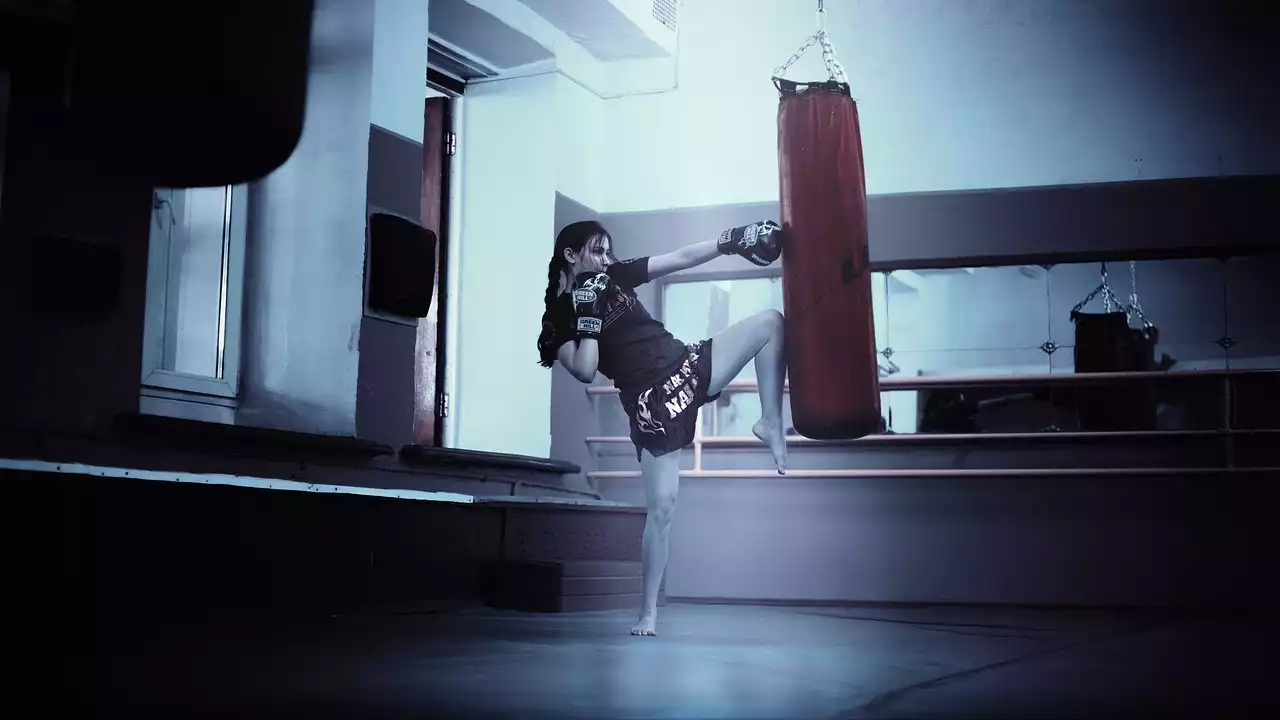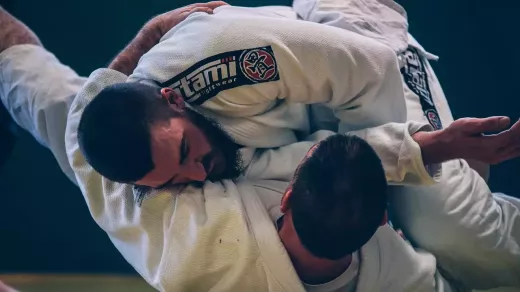Benefits of kickboxing for fitness
Kickboxing is a fantastic way to improve your fitness level and overall health. Here are some of the benefits you can expect:
Cardiovascular health
Kickboxing is a high-intensity, full-body workout that gets your heart rate up and keeps it there. This can help improve your cardiovascular health and reduce your risk of heart disease, stroke, and other conditions.
Strength and endurance
Kickboxing involves a lot of movements that require strength and power, such as punches, kicks, and knee strikes. By practicing these techniques regularly, you can build muscle and increase your endurance.
Coordination and balance
Kickboxing requires a lot of coordination and balance, as you need to coordinate your movements and maintain your balance while executing different techniques. This can help improve your overall coordination and balance, which can be beneficial in other areas of your life.
Stress relief
Kickboxing can be a great way to relieve stress and tension. The physical activity can help release endorphins, which are natural mood-boosters, and the act of punching and kicking can be cathartic and empowering.
Common kickboxing techniques
Before we get into modifications, let's take a look at some of the most common kickboxing techniques:
Jab
A jab is a quick, straight punch that is usually delivered with the lead hand. It's a basic punch that is used to set up other techniques.
Cross
A cross is a powerful punch that is delivered with the rear hand. It's a straight punch that is usually thrown after a jab.
Hook
A hook is a punch that is delivered with a circular motion, usually to the side of the head or body. It can be delivered with the lead or rear hand.
Uppercut
An uppercut is an upward punch that is delivered from underneath, usually to the chin or body. It's a powerful punch that can be delivered with either hand.
Front kick
A front kick is a kick that is delivered with the ball of the foot, usually to the midsection of the opponent. It's a quick, powerful kick that can be used to create distance or knock an opponent off balance.
Roundhouse kick
A roundhouse kick is a kick that is delivered with the shin, usually to the midsection or head of the opponent. It's a powerful kick that can cause significant damage if delivered with enough force.
Modifications for kickboxing techniques
Now that you're familiar with some of the common kickboxing techniques, let's talk about how to modify them to make them more accessible for beginners or those with physical limitations.
Jab and cross
If you're new to kickboxing or have shoulder or arm limitations, you can modify the jab and cross by using lighter weights or no weights at all. You can also modify the technique by doing a slower, more controlled punch, focusing on form and accuracy rather than speed and power.
Hook and uppercut
The hook and uppercut can be modified by using lighter weights or no weights at all and focusing on form and accuracy rather than power. You can also modify the technique by doing a smaller, more controlled motion, rather than a full swing.
Front kick
To modify the front kick, you can start by practicing the motion without any weights or resistance. As you get more comfortable with the technique, you can add light ankle weights or a resistance band to increase the challenge.
Roundhouse kick
The roundhouse kick can be modified by practicing the motion without any weights or resistance. You can also modify the technique by doing a smaller, more controlled motion, rather than a full swing. As you get more comfortable with the technique, you can add light ankle weights or a resistance band to increase the challenge.
Warm-up and cool-down exercises for kickboxing
Before you start your kickboxing workout, it's important to warm up your muscles and get your heart rate up. Here are some effective warm-up exercises you can do:
Jumping jacks
Jumping jacks are a great way to warm up your entire body and get your heart rate up.
High knees
High knees are an effective way to warm up your legs and get your heart rate up.
Jump rope
Jumping rope is a great way to warm up your entire body and improve your coordination.
After your kickboxing workout, it's important to cool down and stretch your muscles. Here are some effective cool-down exercises you can do:
Slow jog
A slow jog can help bring your heart rate down gradually and loosen up your muscles.
Hamstring stretch
To stretch your hamstrings, sit on the floor with your legs straight out in front of you. Reach forward and try to touch your toes, holding the stretch for 30 seconds.
Shoulder stretch
To stretch your shoulders, stand with your feet shoulder-width apart and your arms at your sides. Reach your right arm across your chest and hold it with your left hand, holding the stretch for 30 seconds. Repeat on the other side.
Kickboxing equipment for home workouts
If you want to do kickboxing at home, you don't need a lot of equipment. Here are some essential items to get started:
Boxing gloves
Boxing gloves can help protect your hands and wrists while punching.
Hand wraps
Hand wraps can help support your wrists and prevent injuries.
Resistance bands
Resistance bands can be used to add resistance to your kicks and punches, making them more challenging.
Jump rope
A jump rope is a great tool for warming up and improving your coordination.
Sample kickboxing workout routine with modifications
Here's a sample kickboxing workout routine that incorporates modifications for beginners or those with physical limitations:
Warm-up (5 minutes)
- Jumping jacks (1 minute)
- High knees (1 minute)
- Jump rope (3 minutes)
Technique practice (15 minutes)
- Jab and cross with light weights (2 minutes)
- Hook and uppercut with light weights (2 minutes)
- Front kick without weights (2 minutes)
- Roundhouse kick without weights (2 minutes)
- Repeat the above sequence (3 times)
Circuit training (20 minutes)
- Jab and cross with resistance band (1 minute)
- Squats with resistance band (1 minute)
- High knees (1 minute)
- Push-ups with modified technique (1 minute)
- Rest (30 seconds)
- Front kick with ankle weights (1 minute)
- Plank with modified technique (1 minute)
- Jump rope (1 minute)
- Lunges with resistance band (1 minute)
- Rest (30 seconds)
- Roundhouse kick with ankle weights (1 minute)
- Mountain climbers with modified technique (1 minute)
- Burpees with modified technique (1 minute)
- Bicycle crunches (1 minute)
Cool-down (5 minutes)
- Slow jog (1 minute)
- Hamstring stretch (30 seconds)
- Shoulder stretch (30 seconds on each side)
- Standing quad stretch (30 seconds on each side)
- Seated spinal twist (30 seconds on each side)










